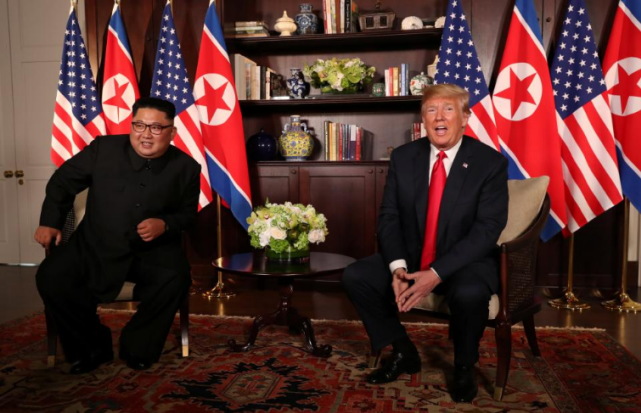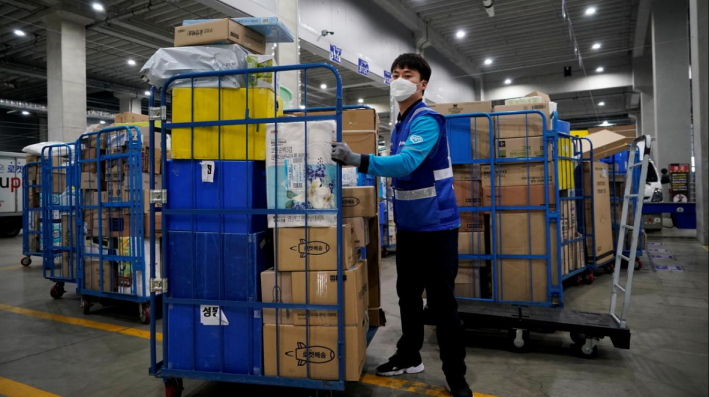Short selling has been banned in South Korea since March 2020
- It was banned in an effort to reduce market volatility during the pandemic and recovery
- also applies to 150 firms listed on the secondary-KOSDAQ


This comes after e-commerce firm, Coupang, reported an outbreak at its logistics center located in Buncheon with at least 36 cases linked to the fresh cluster at the moment.
South Korea’s military will conduct two days of drills around a tiny island also claimed by Japan, Yonhap news agency reported on Sunday, just days after Seoul decided to scrap an intelligence-sharing pact with Tokyo amid worsening relations.
Tokyo and Seoul have long been at loggerheads over the sovereignty of the group of islets called Takeshima in Japanese and Dokdo in Korean, which lie about halfway between the East Asian neighbours in the Sea of Japan, which Seoul refers to as the East Sea.
The military drills were scheduled to begin on Sunday, Yonhap reported, and could exacerbate tensions between the two neighbours.
South Koreas on Thursday had announced the scrapping of the intelligence-sharing pact with Japan, drawing a swift protest from Tokyo and deepening a decades-old dispute over history that has hit trade and undercut security cooperation over North Korea.
Relations between South Korea and Japan began to deteriorate late last year following a diplomatic row over compensation for wartime forced labourers during Japan’s occupation of Korea.
They soured further when Japan tightened its curbs on exports of high-tech materials needed by South Korea’s chip industry, and again this month when Tokyo said it would remove South Korea’s fast-track export status.
The disputed islands have long been one of the most sensitive areas of contention for South Korea and Japan. Recently, South Korea and Japan traded words over the way the islands were described on a website for the 2020 Tokyo Summer Olympics.
The islands were at the centre of a more serious clash in July, when both South Korea and Japan responded to what they saw as a violation of their air space near the islands by a Russian military plane.
 In the latest sign yet that things in the world are roughly 25% worse than expected (give or take), the FT reports that the IMF will seek an imminent rise in its lending cap from $750 billion to $1 trillion to build safety nets that could prevent financial crises. “Even when not in a time of crisis, a big fund, likely to intervene massively, is something that can help prevent crises,” Dominique Strauss-Kahn, the IMF managing director told the Financial Times. “Just because the financing role decreases, doesn’t mean we don’t need to have huge firepower … a $1,000bn fund is a correct forecast.” At this point it is glaringly obvious that without the explicit support of the various central banks and of such fake international but really US organizations as the IMF, the already prevalent liquidity crisis would simply destroy the world. The troubling theme is that instead of taking away incremental worries, we have now gotten to the point where one bailout, like a butterfly in China, merely requires 10 more down the road. Alas, instead of a virtuous Keynesian dynamic, this is anything but.
In the latest sign yet that things in the world are roughly 25% worse than expected (give or take), the FT reports that the IMF will seek an imminent rise in its lending cap from $750 billion to $1 trillion to build safety nets that could prevent financial crises. “Even when not in a time of crisis, a big fund, likely to intervene massively, is something that can help prevent crises,” Dominique Strauss-Kahn, the IMF managing director told the Financial Times. “Just because the financing role decreases, doesn’t mean we don’t need to have huge firepower … a $1,000bn fund is a correct forecast.” At this point it is glaringly obvious that without the explicit support of the various central banks and of such fake international but really US organizations as the IMF, the already prevalent liquidity crisis would simply destroy the world. The troubling theme is that instead of taking away incremental worries, we have now gotten to the point where one bailout, like a butterfly in China, merely requires 10 more down the road. Alas, instead of a virtuous Keynesian dynamic, this is anything but.
Some more on the IMF’s feeble attempt at justifying the need for its exploding funding requirements, as well as its own attempt to validate that all is well:
South Korea, as this year’s president of the Group of 20 leading economies, is helping craft the plan. Seoul hopes to convince the G20 countries to back the increased IMF funding at a summit in South Korea in November. The G20 meeting in London in 2009 tripled IMF resources from $250bn. A US official said Washington was sympathetic to improved safety nets but needed more details on the Korean-IMF plan.
South Korean economists forged the plan because of their own bitter experience of their currency and stock market plunging in 2008. In spite of robust economic fundamentals, Seoul needed to be rescued from a dangerous liquidity shortfall by swaps from the US, Japan and China. (more…)

Since Apple’s Steve Jobs launched the iPhone 10 years ago, smartphones have changed people’s lives drastically. For many, it is now hard to imagine living without a device that, as well as making calls, allows you to connect with friends online, search for news, check the weather and watch movies.
However, at least one group of people has been unable to fully participate in the smartphone revolution — the visually-impaired. Eric Kim, chief executive of South Korean startup Dot, recognized this imbalance. In South Korea, 253,000 people were registered as visually-impaired in 2015, according to data from Statistics Korea. And with some 285 million visually-impaired people registered around the world, Kim realized there was a market to bring a more appropriate device to them.
Now, after two years of ups and downs, the company is making final preparations to release the result of Kim’s quest — the first braille smartwatch. The Dot Watch, which will be priced at $290 before tax when it goes on sale in the next few months, has drawn more than 150,000 pre-orders from 15 countries, including one from musician Stevie Wonder, according to the company. It enables visually-impaired people to check messages, the time and set alarms via a Bluetooth connection to other smart devices. (more…)